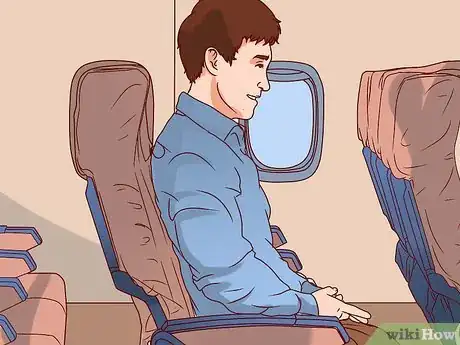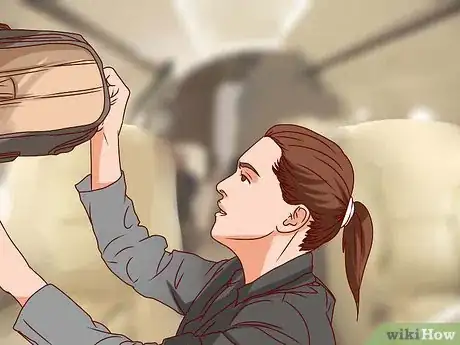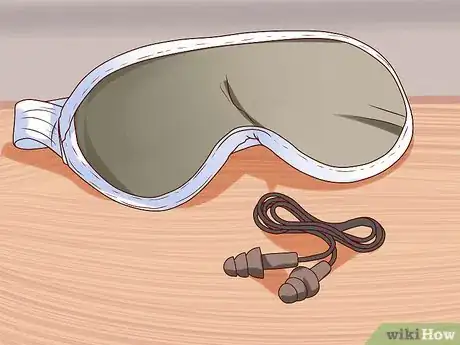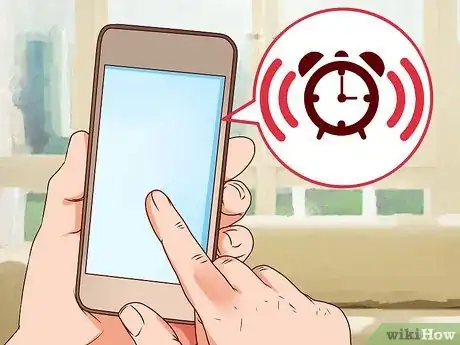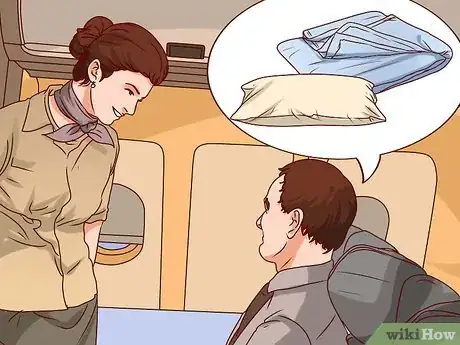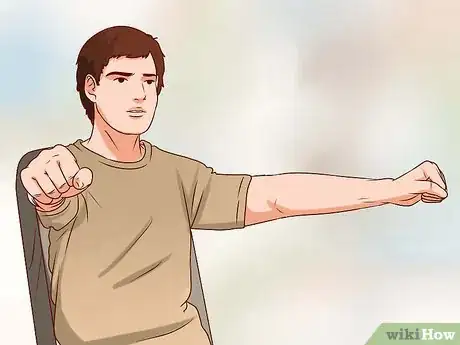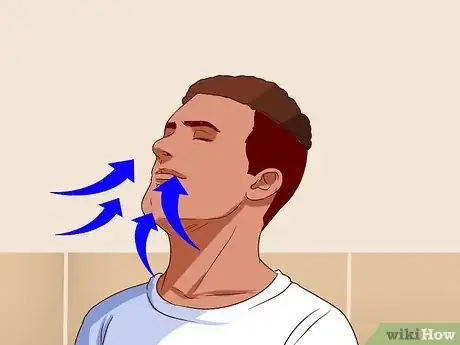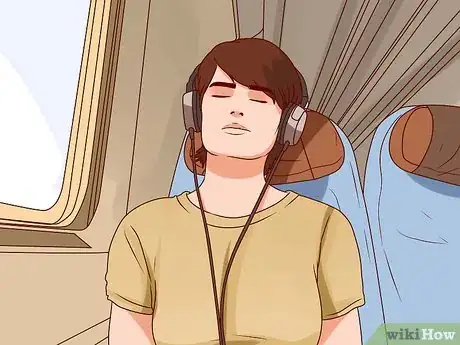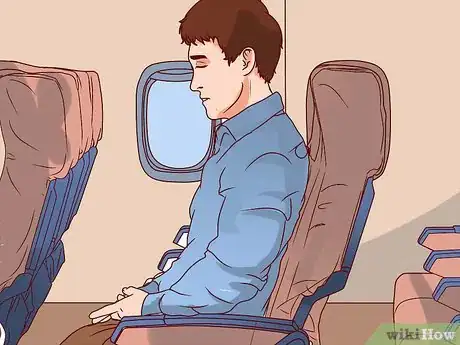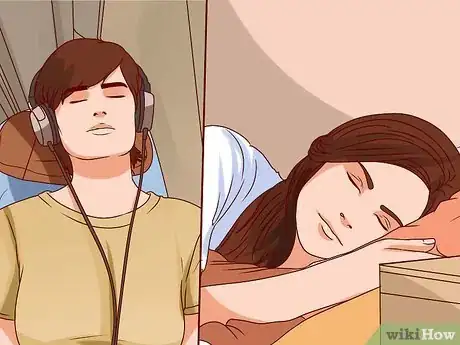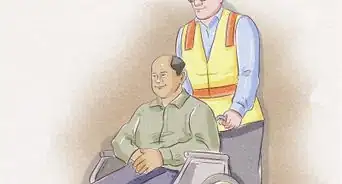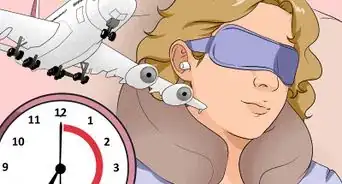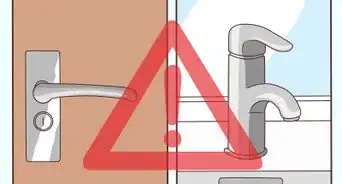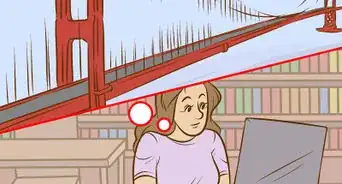This article was co-authored by Chad Denman. Dr. Chad Denman is a Sleep Medicine Provider and is the Owner of Sleep Cycle Center in Austin, TX. With over ten years of experience and over 500 hours of Continuing Education in Sleep, he specializes in identifying and offering multiple treatment options to patients suffering from sleep issues. Additionally, he previously treated patients as a general dentist for over a decade! Dr. Denman completed his Doctor of Dental Surgery degree at Marquette University and earned an undergraduate degree in Exercise Physiology from Florida State University. He’s also a member of the American Academy of Sleep Medicine (AASM), the American Dental Association, and the Academy of General Dentistry. In addition, Dr. Chad is the Director of Doctor Success for the International Academy of Sleep (IAOS). There, he coaches other dentists on how they can become healthcare entrepreneurs and lectures nationwide on the importance of treating sleep apnea.
There are 16 references cited in this article, which can be found at the bottom of the page.
This article has been viewed 60,708 times.
Getting some sleep on a long haul flight or lengthy train journey can be difficult. There's nothing worse than feeling tired and exhausted when you arrive at your destination. Lack of sleep can also make jet lag symptoms worse. This article tells you how to get to sleep on an airplane or a train.
Steps
Part 1 of 3: Settling In
-
1Choose your seat or bunk carefully. Opt for the most comfortable one you can afford. Many airlines offer fully reclining seats that convert into flat beds in first class and sleeping berths with beds are often available in the first class compartments of trains. If first class travel is outside your budget, think about paying for extra leg room on a flight, especially if you are taller than average. Even if you're stuck in coach however, you can still get a seat that works for sleeping.
- Get a seat that reclines. If traveling by airplane, avoid the back row of the plane where the seats often don't recline fully. On overnight train journeys, reclining seats with leg rests are usually available in coach class.
- Pick somewhere quiet. On planes this is typically the middle rows where you are less likely to be distracted by the noise and movement of other passengers and flight attendants.
- If you find that being near children can disturb your sleep, avoid bulkhead seats on a plane as this is often where the cribs are located.
- Go for a window seat. Many passengers report that it is easier to drift off in a window seat where you can rest your head against the side of the plane or train. You are also less likely to be disturbed by another passengers getting out to the aisle.
- Get a good bunk on the train. On longer European train journeys, shared couchette accommodation is popular and affordable. A couchette is a room with several bunks, which you will share with strangers. The rooms lock from the inside.[1] The top bunk is generally more secure, but if you need to get up during the night to use the bathroom it can be difficult to do so in the dark.
-
2Secure your belongings. This is more pertinent to train travel because although trains are generally very safe places, robberies do happen. When you're sleeping you are more vulnerable, so prepare for the worst by keeping valuables with you at all times. If you feel comfortable and safe it will be much easier to get some rest.
- Consider using a money belt that straps to your waist or thigh.
- If you are storing luggage in the overhead bins, make sure the opening is facing away from the aisle and consider using a lock.[2]
Advertisement -
3Bring the necessary equipment to encourage sleep. Packing these items in your hand luggage will help you create the right conditions for sleep.
- An eye mask. Many airlines give these out for free when you board but they are not generally available on trains. Opt for an eye mask with a flap that comes down over the top of your nose to keep the light out as much as possible.
- Earplugs. Airplanes and trains can be very loud places, with the sounds of other passengers, the meal and drink service and plane engine noise potentially disrupting your rest. Bring foam or silicone earplugs so that you can block out the noise and get some sleep.
-
4Communicate to avoid being woken up. As you settle into your seat, tell your neighbor that you are planning on sleeping. On a plane, let the flight attendants know that you don't need to be woken up for meals or drinks.
-
5Set an alarm. Set it for an hour before you are scheduled to arrive at your destination. Remember that you may be crossing several time zones and be aware of the local time at your destination. Feeling prepared and ready for what's ahead will help you to relax and get some sleep without worrying about what will happen at your destination.
Sleeping Quickly and Restfully
-
1Follow your usual sleep routine as much as possible. Imitating the normal night-time routine that you follow at home even though you are traveling can promote relaxation and rest, as your brain associates these activities with sleep.[3]
- Do what you usually do at night - use the bathroom, brush your teeth, wash your face, change into sleep attire and read a book or watch a movie to help you drift off.
- Turn off screens one hour before you want to fall asleep. The blue light they release affects our ability to fall asleep.[4]
-
2Get as comfortable as possible. Even in coach seats there are a few key things you can do to get comfortable.
- Be aware of your body temperature. On planes, cabin temperature can vary considerably even during a single flight, so wear lighter layers that can be taken on and off easily.
- Wear lose-fitting clothing in natural fibers that will allow your body to breathe and release heat. A hat or a hood may also be a good way of keeping light out of your eyes.
- Get some comfy socks. Research suggests that wearing socks can promote sleep because heating cold feet causes the blood vessels in the feed to dilate (known as vasodilation). This signals to the brain that it can redistribute heat throughout the body and prepare for rest.[5]
- Bring comfortable shoes for the train. Shoes are required to be worn at all times on Amtrak trains so pack some light plastic sandals or other comfortable footwear for the journey.[6]
-
3Use pillows and blankets. If you have a sleeping bunk on a train, you can expect pillows and blankets be available. Some airlines also provide them.
- A neck pillow is important if you are unable to fully recline because as we fall into a deep sleep the muscles in our body relax more and more. In a seated position, therefore, it is more difficult to fall into a deep sleep because the neck muscles have to keep working to support our heads.
- Use the classic U-shaped travel pillow. Experts suggest using it the other way round, with the back of the pillow against the front of your neck. This will stop you jerking awake as your head falls downwards and could help with neck cramps.[7]
- Bring blankets to keep you warm. On an airplane, buckle your seat belt over the blanket to avoid being woken up by cabin crew if the seatbelt sign goes on.
-
4Watch what you eat and drink. Avoiding certain foods that inhibit good sleep and trying to eat at regular meal times can help you get some rest.
- If you drink alcohol, limit it to one drink. Even though alcohol helps you fall asleep, it reduces REM (rapid eye movement) sleep which is the most restorative, so you will not sleep as deeply.[8]
- Don't consume caffeine before or during the flight as caffeine is a stimulant and inhibits sleep. Be aware that it can take up to 6 hours for caffeine to be eliminated from the body.[9]
- Sip water to stay hydrated but not enough that you constantly need to use the bathroom.
- Try to eat at regular times, as your internal body clock affects your digestion.[10] It can be difficult to sleep after a heavy meal or if you are hungry.
-
5Try some relaxation exercises. There are several you can do while in your seat. For example, deep muscle relaxation exercises where you flex or clench your muscles and then gradually focus on letting go and relaxing them can be very effective.[11]
- Start with the muscles in your toes or fingers and then move carefully around the body, by the end you will feel a deep sense of relaxation.
-
6Do some breathing exercises. Deep breathing helps achieve a state of relaxation conducive to sleep. Focus on maintaining a steady inhale and exhale. If you find this difficult, try the 4-7-8 technique, where you inhale through your nose for four seconds, hold your breath for seven seconds and then exhale through your mouth for eight seconds.[12] Repeat until you fall asleep.
Dealing with Especially Bad Cases
-
1Consider sleeping pills but know the risks. Many travelers use prescription or over-the-counter sleeping aids to help them get to sleep. However, prescription medications should only be taken if prescribed by a physician. Risks associated with sleeping pills include DVT (deep vein thrombosis) and feelings of drowsiness and disorientation upon awakening.[13]
- Over-the-counter sleep aids have a more moderate effect but it is still recommended that you only take them if you can ensure that you have four uninterrupted hours to sleep.
-
2Consider supplements such as melatonin. Melatonin is a naturally occurring hormone produced by the body, it is also available as an over-the-counter supplement. Sleep researchers have found that melatonin levels are elevated after dark and remain elevated throughout the night, suggesting that it can promote sleep.[14] Some studies also suggest that if you continue to take it when you arrive at your destination, it can ease the symptoms of jet lag as well.[15]
-
3Try aromatherapy. Essential oils such as lavender, chamomile and valerian have a relaxing effect and may help you drift off to sleep. [16] When traveling, pack a small spray bottle with your desired essential oil mix and spray on your pillow or clothing.
-
4Use technology that will help you relax. There are various apps and gadgets that you can use to help you settle down and get some rest.
- Noise-cancelling headsets can reduce the noise of the plane engine quite effectively. This can help you to feel relaxed enough to sleep, especially if you are a nervous flyer.
- Play white noise sounds. Research suggests that white noise, which you can download on your phone or music player, can also help promote sleep.[17]
- Bring a music player with a relaxing playlist that will soothe you to sleep.
-
5Try your hardest to stay awake. Get comfortable, shut your eyes and then try to stay awake. Research suggests that this method, known as paradoxical intention, works and helps people fall asleep quicker. [18]
-
6Don't stress if you can't sleep. Above all, don't worry if you find you really can't sleep. Traveling can be a stressful process, it may simply be difficult to relax and to drift off. Accept this for what it is and remember that it's only a short-term problem. You can sleep once you get to your destination and it won't affect your whole trip.
- Don't compare yourself to other passengers who seem to be sleeping soundly, chances are that they aren't sleeping as deeply as you think.
- Even if you do sleep you may still be affected by jet lag, which is about how your body adjusts to the change in time zones and the disruption of its circadian rhythm.
Expert Interview

Thanks for reading our article! If you'd like to learn more about falling asleep easier, check out our in-depth interview with Chad Denman.
References
- ↑ http://www.reidsguides.com/t_tr/t_tr_overnight.html
- ↑ http://traveltips.usatoday.com/sleep-amtrak-train-seat-62131.html
- ↑ http://frugaltraveler.blogs.nytimes.com/2011/09/27/cramped-in-coach-or-the-science-of-sleep/
- ↑ http://www.entrepreneur.com/article/233923
- ↑ https://thesleepdoctor.com/sleep-hygiene/sleeping-with-socks-on/
- ↑ http://blog.amtrak.com/2013/10/tips-for-sleeping-in-coach/
- ↑ http://frugaltraveler.blogs.nytimes.com/2011/09/27/cramped-in-coach-or-the-science-of-sleep/
- ↑ http://www.webmd.com/sleep-disorders/news/20130118/alcohol-sleep
- ↑ https://sleepfoundation.org/sleep-topics/caffeine-and-sleep
- ↑ http://frugaltraveler.blogs.nytimes.com/2011/09/27/cramped-in-coach-or-the-science-of-sleep/
- ↑ http://www.everydayhealth.com/sleep/insomnia/tips/guide-to-relaxation.aspx
- ↑ http://www.drweil.com/drw/u/ART02039/the-art-and-science-of-breathing.html
- ↑ http://www.businessinsider.com/sleeping-pills-for-planes-2014-12
- ↑ https://sleepfoundation.org/sleep-topics/melatonin-and-sleep
- ↑ http://www.webmd.com/a-to-z-guides/jet-lag-and-melatonin-topic-overview
- ↑ http://www.aromaweb.com/articles/aromatherapyandinsomnia.asp
- ↑ http://www.ncbi.nlm.nih.gov/pubmed/20043248
- ↑ http://journals.cambridge.org/action/displayAbstract?fromPage=online&aid=167949
